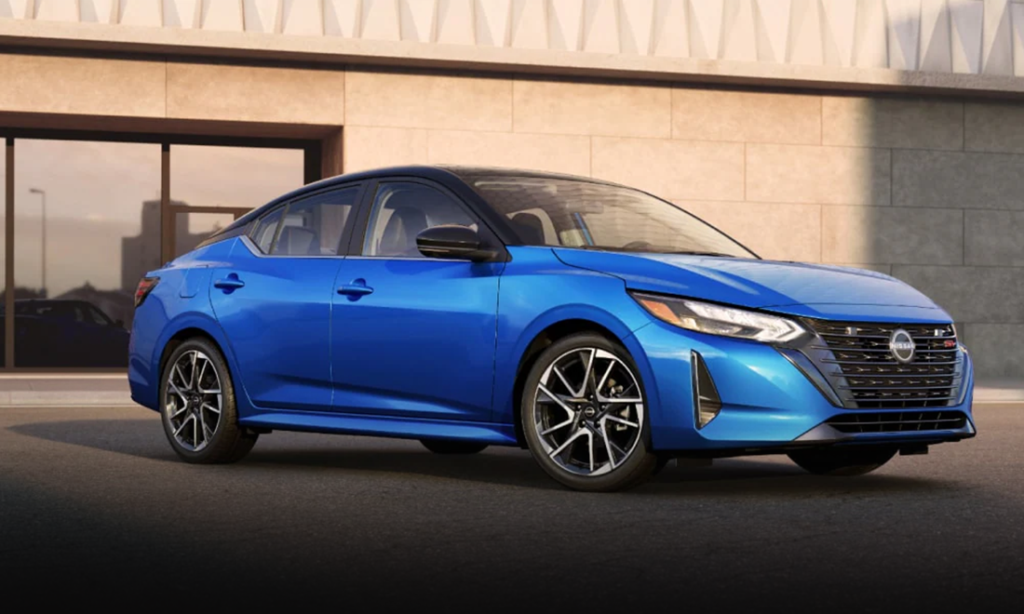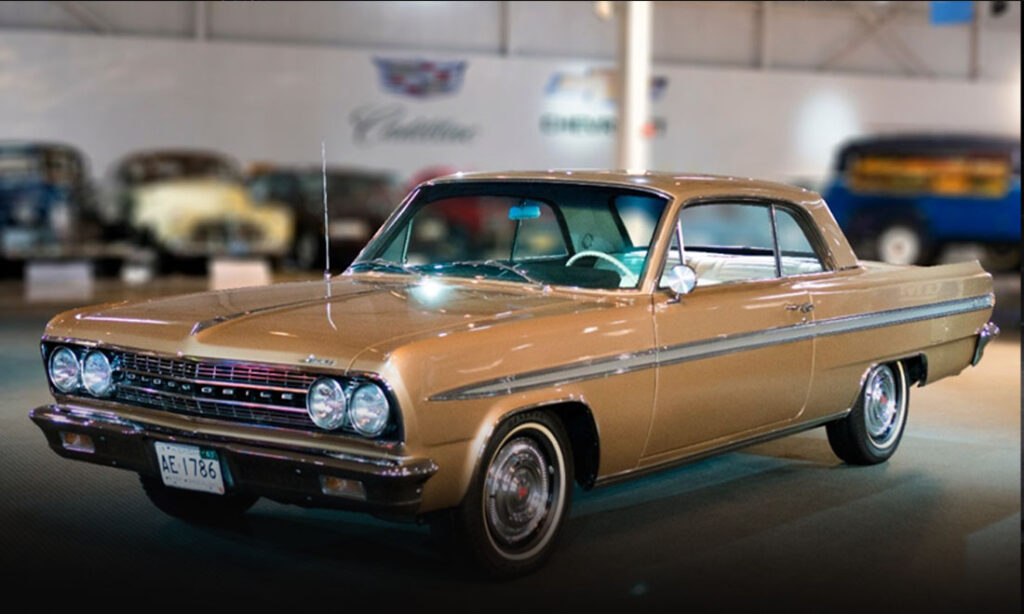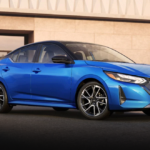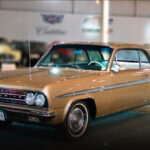Retro Review: Ford F-100
It doesn’t get much more classic pickup than Ford’s definitive F-100. Check out the thirty-year legacy of this quintessential light truck.
Classic Half-Ton
The F-Series from Ford has been the best-selling pickup in the US since 1977 and the best-selling vehicle in the US for over 40 years. It is hard to overstate how popular the F-Series has been and remains to be. Today, we wanted to look back at where it all started with the original F-Series half-ton pickup, the F-100. Across seven generations, the F-100 evolved from light-duty workhorse to do-it-all daily driver, consistently delivering when it mattered, holding up to even the most demanding jobs, and becoming an automotive legend in the process.
First Generation Ford F-100 (1948-52)
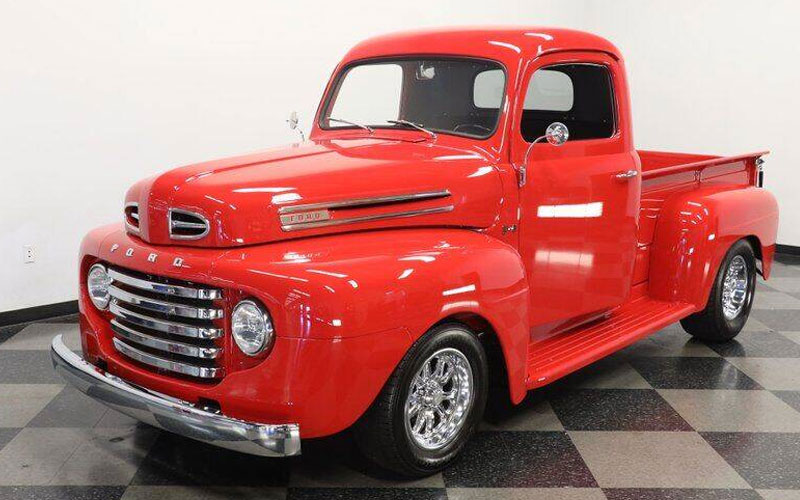
1950 Ford F-100 – carsforsale.com | Shop Ford F-100 on Carsforsale.com
In the F-Series initial generation coming out of WWII, Ford offered a line-up of “Bonus Built” trucks that began with the light-duty F-1 and went all the way to the F-8 used for buses, firetrucks, and the like. The F-1 was a simple, practical truck featuring the choice of either a 226 cu-in flathead six-cylinder or a 239 flathead V8 and either a three- or four-speed transmission. With conflict in Korea looming, buyers eagerly snapped up the F-1, anticipating a production slow down or outright halt. This hunch proved out as production in 1951 (for the ’52 model year) was greatly reduced due to the war.
Second Generation Ford F-100 (1953-56)
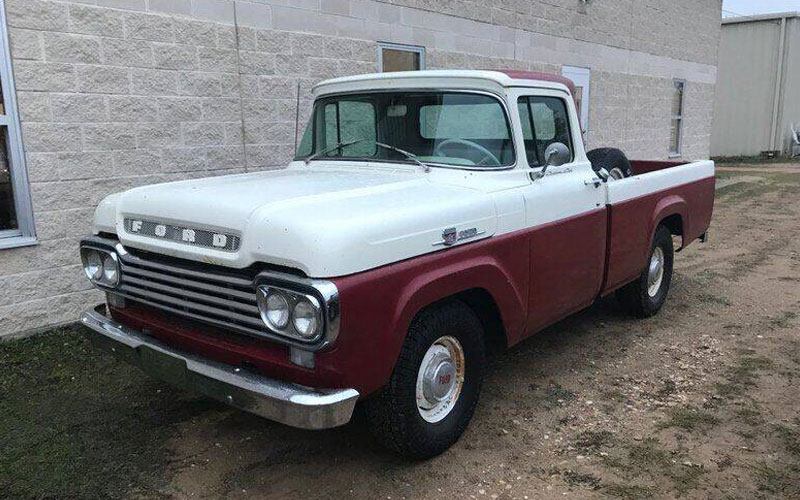
Now marketed as the “Triple Economy” series, the F-Series trucks evolved stylistically and substantively with a new chrome bumper, new engine options, and the addition of power brakes and an optional automatic (Ford-O-Matic) transmission. The F-Series’ naming conventions also changed, going to a triple digit format which meant the F-1 was now the F-100. 1953 would be the final model year for the flathead engines before the introduction of the Y-block V8s and overhead valves. The 1956 model was the most unique of the second-generation F-Series and featured vertical pillars (not slanted) and a wraparound windshield.
Third Generation Ford F-100 (1957-60)
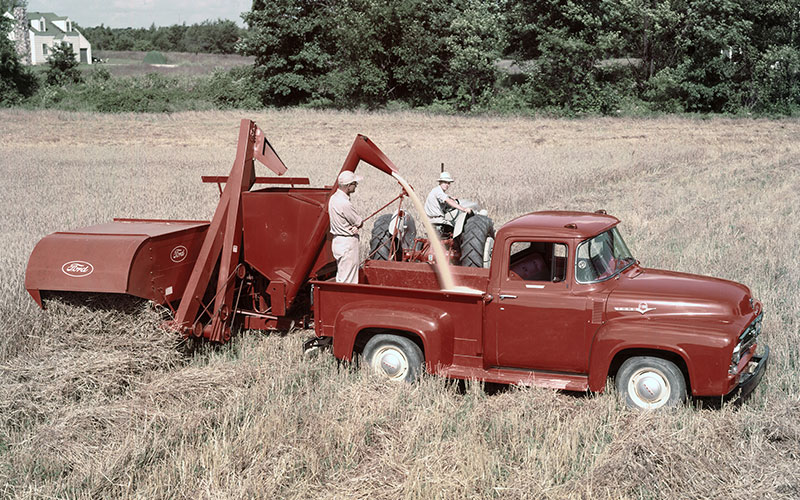
With its third generation, the F-100 and the F-Series more broadly received a major change up with the introduction of the new “Stateside” body style. Gone was the classic step-side design, now the transition from cab to bed was seamless. The bed was also widened by 8%, adding greater utility to the truck. Other additions included a new “Custom Cab” package that included luxury features like sun visors, upgraded upholstery, and a cigarette lighter. Factory-installed four-wheel drive was introduced for the first time with the 1959 model year.
Fourth Generation Ford F-100 (1961-66)
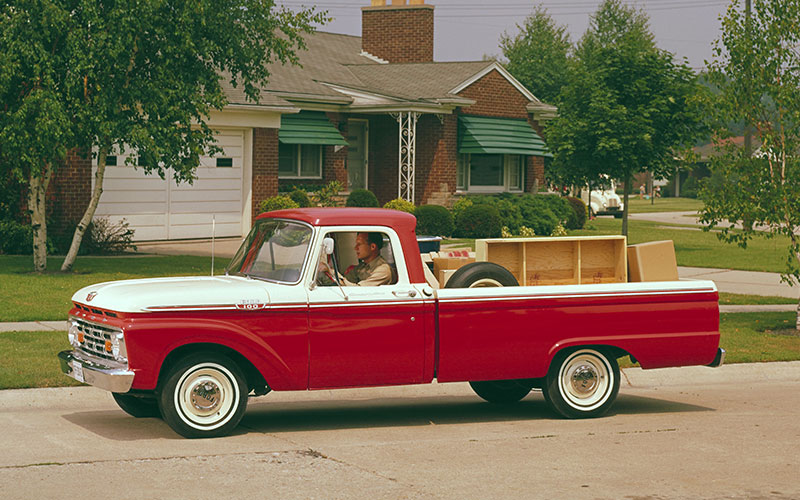
The fourth-generation F-100/F-series saw a major leap forward in design as the truck got lower, longer, and more angular. To save on production costs, Ford experimented with a new unibody design, a.k.a. the “integrated pickup,” by fusing the bed and cab together. This resulted in less flex in the truck, especially when loaded. Doors would unexpectedly pop open or, conversely, be stuck shut. Luckily, this construction was limited to two-wheel drive versions and dropped mid-way through the 1963 model year. A new frame and, for 2WD trucks, a new Twin I-Beam independent front suspension arrived for the 1965 model year. The following year was the first for the four-door crew cab design in the F-Series. A new 352 cu-in FE V8 was added, starting in 1964, which, for the first time granted the F-Series above 200 horsepower (208 hp to be exact). This was also the first generation for the Ranger trim level, which added amenities like carpet, AC, power steering, and power brakes.
Fifth Generation Ford F-100 (1967-72)
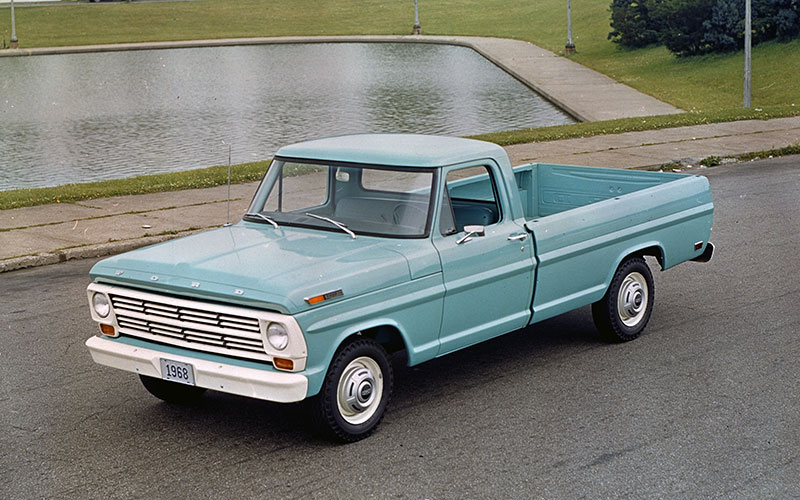
The F-100 continued to get more squared off in its fifth generation. The cab became more accommodating with three additional inches of width. Engine options also expanded throughout this generation. Ford also began offering a wide range of special editions starting with the 1968 model year. These included the Camper Special, the Explorer Special, Contractor Special, and the Farm & Ranch Special. Air conditioning became a factory option starting the same year and coincided with the addition of two new FE V8s, a 360 cu-in and a 390 cu-in, the latter making up to 255 horsepower. A new 302 Winsor V8 was added for the 1969 model year and a new grille design was deployed the following year.
Sixth Generation Ford F-100 (1973-79)
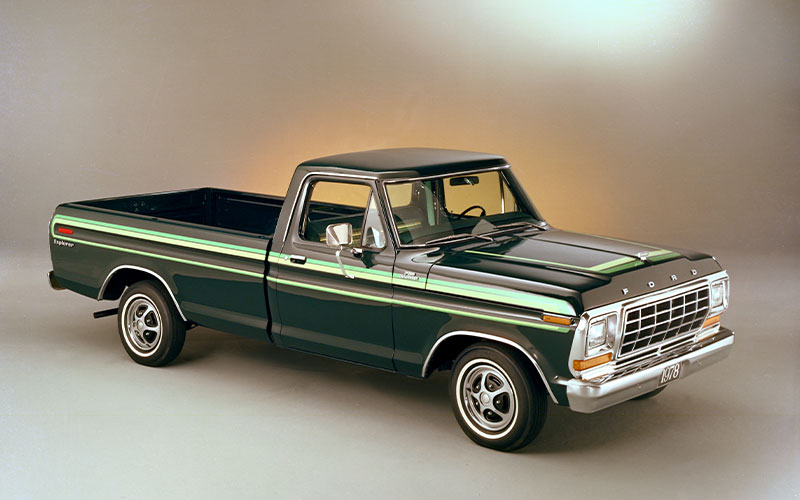
The F-Series received yet another new grille design with the advent of its sixth generation. A new “extended cab” design was first offered starting with the 1974 model year which offered either a set of center facing jump seats or a bench in back. The 1975 model proved momentous with the arrival of the new F-150 to fit in between the F-100 and the F-250. It was in this generation, starting in 1977, that the F-Series became the best-selling truck in America. A title it has yet to relinquish. The second-generation Ford Bronco arrived in 1978, having shifted to the same platform as the F-Series. Its chassis was a shortened version of that used on the F-100.
Seventh Generation Ford F-100 (1980-83)
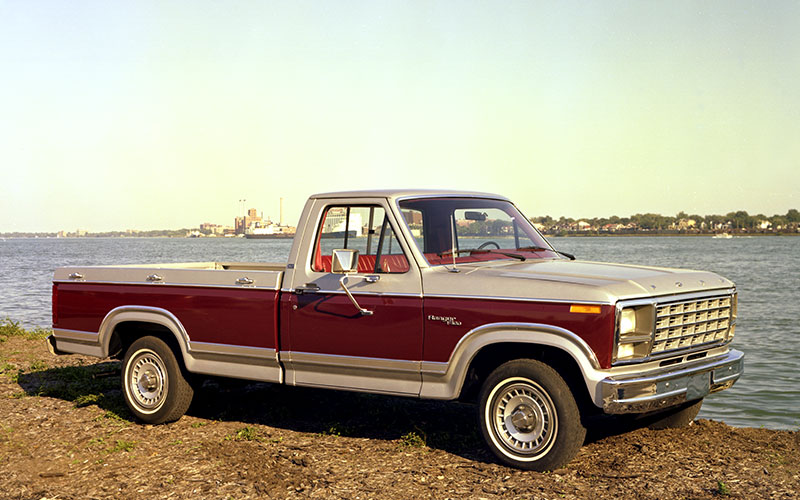
1980 Ford F-100 – media.ford.com | Shop Ford F-100 on Carsforsale.com
The seventh generation of the F-Series would be the last for the F-100. Major redesigns for this generation included both a new body and a new chassis. The four-door crew cab body style was dropped as was the FORD lettering that had adorned the front of the hood. The Ford Ranger light pickup debuted as its own nameplate for the 1983 model year, creating an overlap with the F-100. That redundancy, along with the surging popularity of the F-150, meant the end of the F-100 after 1983.


